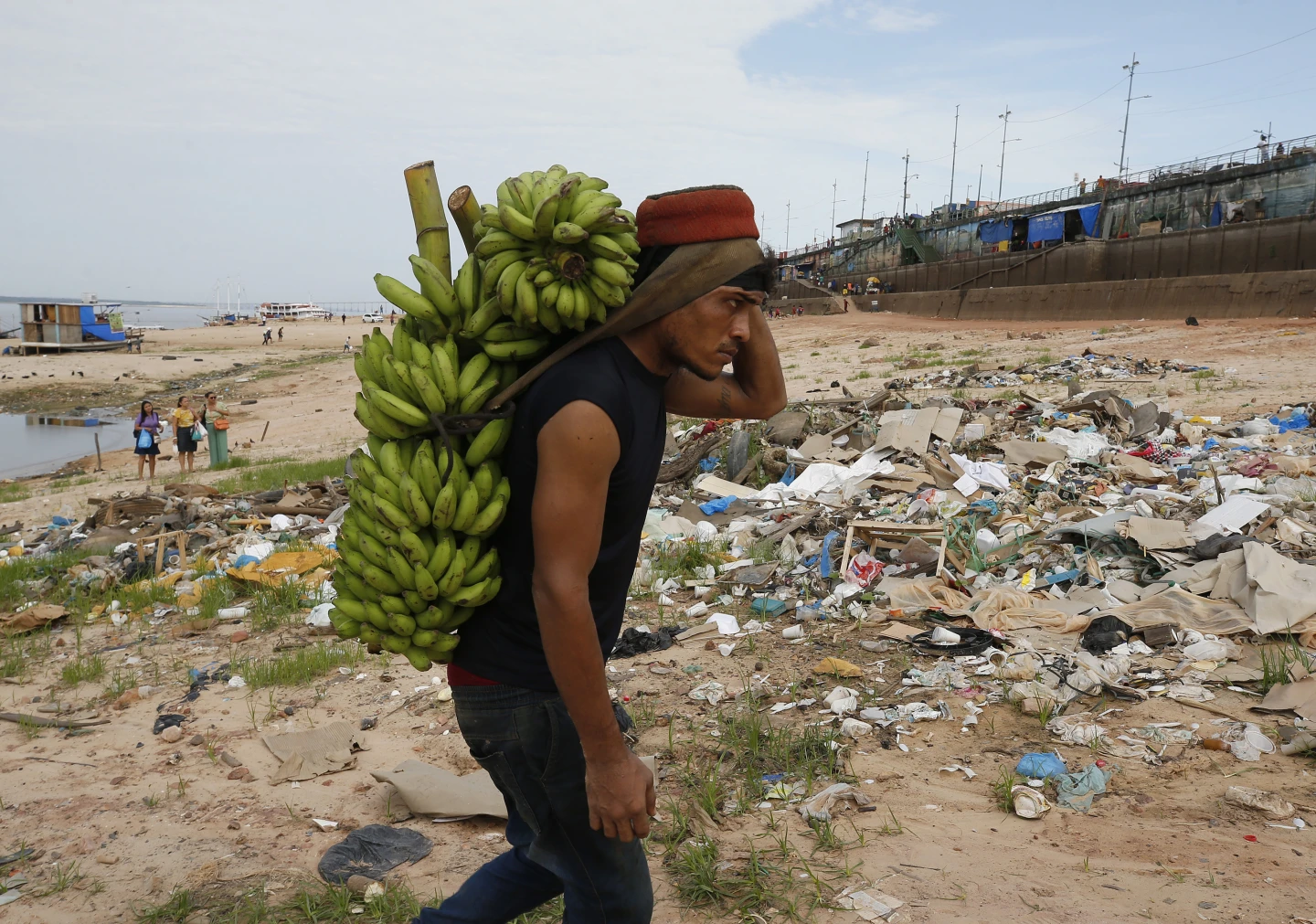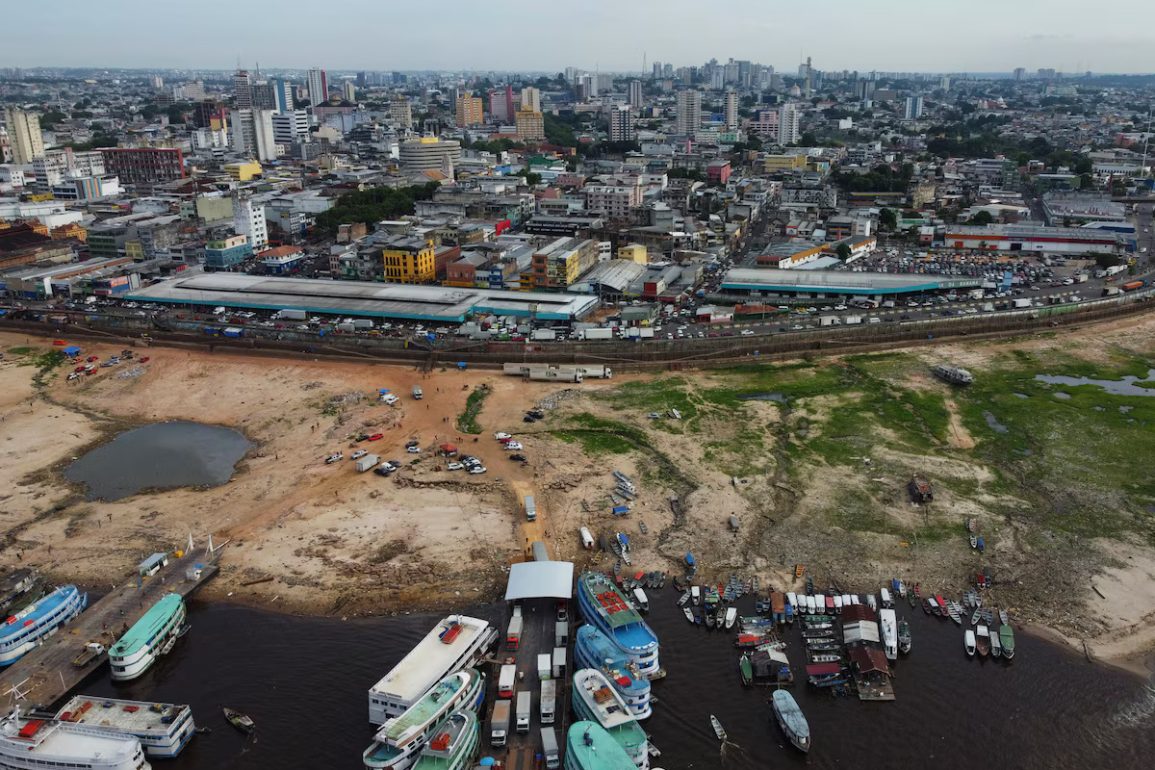The Negro River, one of the primary tributaries of the Amazon River, has reached its lowest recorded water level in 122 years, according to Brazil’s geological service. On Friday, the river’s level at the port of Manaus was measured at 12.66 meters, a stark contrast to the normal level of approximately 21 meters.
This unprecedented drop highlights the severe drought affecting not only the Amazon rainforest but also other parts of Brazil, with the previous record low set just last year. The situation underscores the environmental challenges posed by ongoing climate change.
Forecasts indicate that water levels in the Negro River may continue to decline in the weeks ahead, with predictions of low rainfall in upstream areas. Andre Martinelli, the hydrology manager in Manaus, noted that the river is expected to recede further until the end of the month.
While the Amazon’s water levels naturally fluctuate with the rainy and dry seasons, the current dry season has proven to be exceptionally harsh, leading to critical levels in all major rivers within the Amazon basin, including the Madeira River.

The Negro River drains roughly 10% of the Amazon basin and ranks as the sixth-largest river globally by water volume. It is vital for the local ecosystem and for Manaus, the largest city in the rainforest, where the Negro joins the Amazon River. The declining water levels pose significant risks not just to the environment but also to the communities relying on these rivers for sustenance and economic activities.
The impact of the drought is being felt acutely by local residents. For instance, Gracita Barbosa, a 28-year-old cashier who works in a floating shop on the Negro River, has been unable to continue her job due to the low water levels preventing boats from reaching her location.
This has forced her to adapt to a new reality, where she can no longer bathe in the river and must travel much farther to find drinking water. The hardships faced by residents highlight the immediate human costs of this environmental crisis.
This situation calls for urgent action to address the underlying causes of climate change and its effects on water management in the Amazon region. As the drought continues to affect daily life for many, the necessity for sustainable practices and long-term strategies for preserving Amazon’s resources becomes increasingly critical.
The health of the river and the well-being of its surrounding communities are intricately linked, emphasizing the need for a concerted effort to mitigate the impacts of such environmental challenges.

